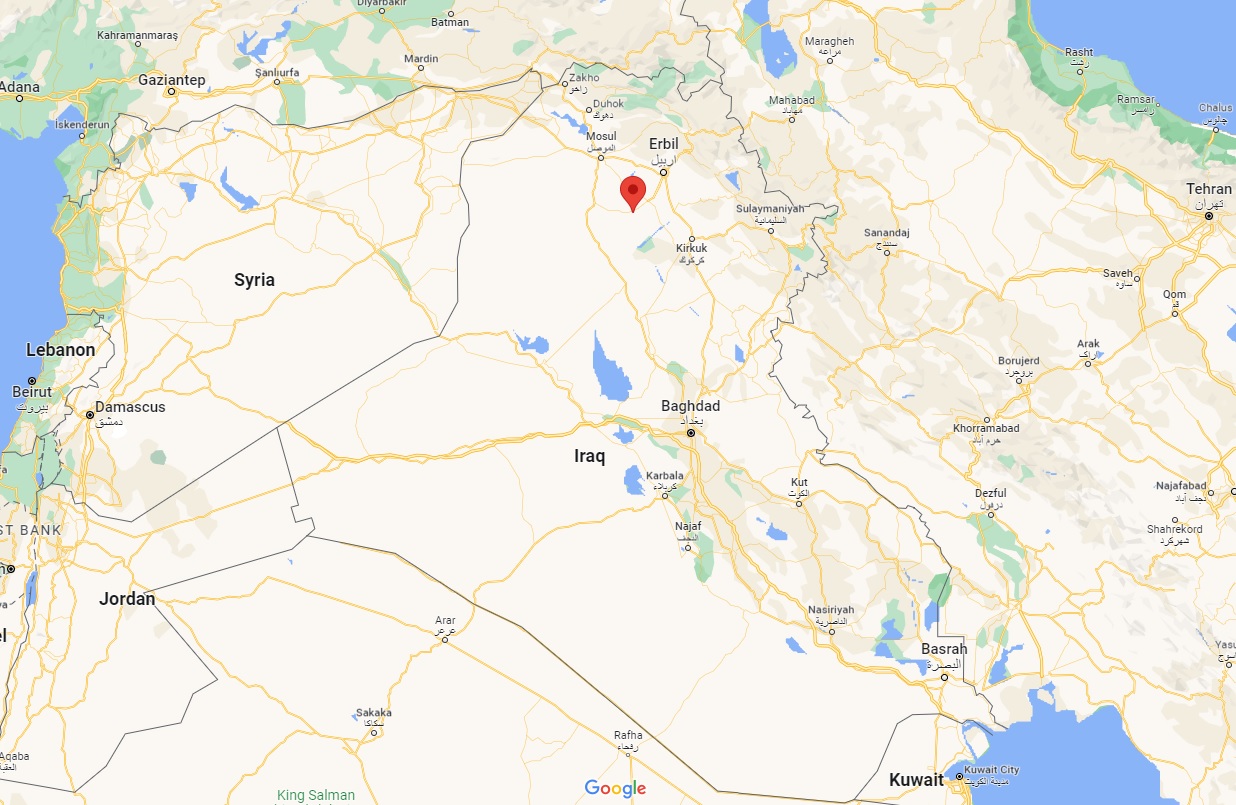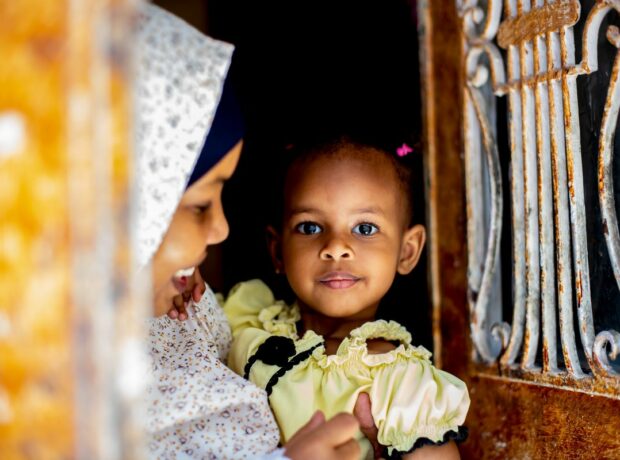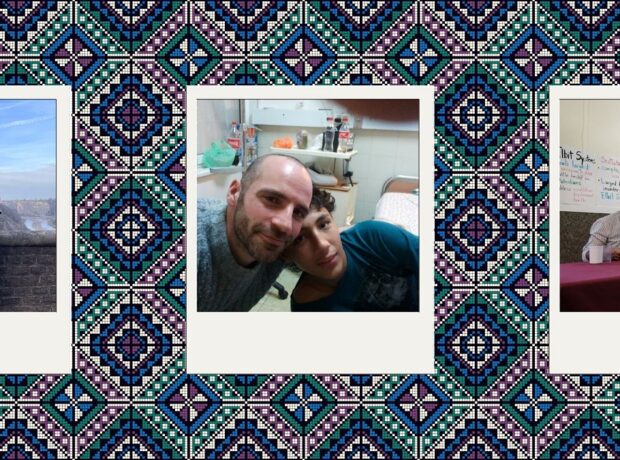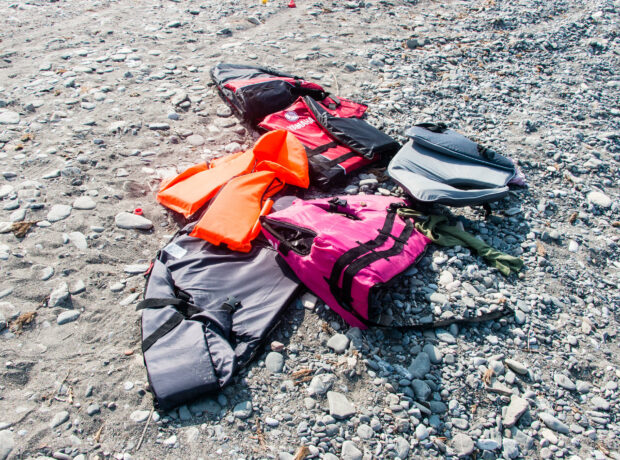In northern Iraq, photographer Paul Trowbridge visits Makhmour refugee camp – a camp the size of a small town. He finds that having fled persecution in Turkey 30 years ago, the refugees are still not safe from bombs. But, despite difficult circumstances, these photographs show the camp’s residents carrying on and finding ways to maintain life with normality and hope.
There are currently 12,500 people living in Makhmour refugee camp, making it the largest settlement of Kurdish refugees from Turkey in Iraq. Established in 1998, Makhmour became home to villagers who arrived in Iraq in the early 1990s following Turkey’s “depopulation” campaign, in which 2,000 Kurdish villages were bombed. In the beginning, the camp was just tents, but over the decades the community has built permanent homes, roads, schools, and a clinic. Despite attempts to create a new home, only last summer a refugee was killed when a bomb hit his home in the camp.

I photographed the camp in November 2022. The photo essay presents an important human rights story focused on both recent tragedy and ongoing adversities, while also presenting resolve, hope and the celebration of life among camp residents.
My photographs include images of the family of the most recent casualty of Turkish bombing. A civilian construction worker named Abu Zaid Abdulla Obeid was killed by a Turkish bomb just outside his home on August 28, 2022. I also photographed the camp’s clinic where there is only one doctor for 12,500 residents. And I captured a wedding procession involving the entire camp community, a celebration of life and love.
We can see tragedy and adversity, but also the hope, resolve and celebration that simultaneously co-exist in the Makhmour refugee camp.

In this picture, a boy gives the “Victory” sign. Turkey criminalizes the public display of this hand gesture, where the government considers it to be affiliated with the Kurdistan Workers’ Party. Persons have been prosecuted, convicted, and imprisoned for “propagandizing for a terror organization” in Turkey for publicly displaying the 2 finger Victory sign.
Makhmour is located about 60km (40 miles) southwest of Erbil, the capital city of the Kurdistan Autonomous Region of Iraq. Yet the camp lies in territory controlled by Baghdad-based Republic of Iraq and not the Kurdistan Regional Government. Makhmour is in the desert, where a significant drought has eroded much of the agricultural activity in the region.
Many of the refugees maintain deep sympathies and loyalties to the Kurdistan Workers’ Party (PKK), a left-wing opposition party that has been involved in armed struggle against the Turkish state since 1984. This strong historical connection to the PKK has led to continued bombings from Turkey, and the Kurdistan Regional Government places extraordinary restrictions on residents’ liberties and movement, with deadly consequences for the camp’s refugees. Yet, at the same time, due to the left-wing ideology of the PKK, community life in the camp is more gender-equal, progressive and democratic than can be found in the surrounding areas of Iraq and the Kurdistan Regional Government.

The family of Abu Zaid Abdulla Obeid. From the left are pictured: Akhin (daughter), Pakiza (wife), Rojin (daughter) and Media (daughter).
Turkey continues airstrikes and bombardments against the camp. The most recent casualty of Turkish bombings was Abu Zaid Abdulla Obeid, a construction worker, killed by a Turkish bomb strike just outside his home on August 28, 2022. His wife and daughters were home when the bombing occurred. I photographed them at their home, and also mourning with others from the community at his grave. Bombings and airstrikes against the civilian refugee camp by Turkey are not uncommon, also killing refugees in 2020 and 2021.

Pictured are family members and others from the community mourning at the grave of Abu Zaid Abdulla Obeid, killed by a Turkish bomb on August 28th 2022. Airstrikes are not the only security threat faced by the camp’s residents. The Islamic State group (ISIL) have attacked the camp twice since 2014. In both instances, fighters from the PKK defended the camp.
Currently, the camp receives no support from the United Nations, despite the camp’s official recognition as a refugee settlement by the United Nations High Commissioner on Refugees (UNHCR). It previously received support through the UN oil-for-food program, however, that stopped in 2018 and all other UN support has ceased since the war with ISIL.

Most families in the camp have small plots of land to grow vegetables. Here a woman stands in her garden.

The same woman with her family outside their home.
Today, camp residents live in permanent housing. Refugees first began arriving in 1992, and between 1994 and 1998 they were moved around eight times between different camps. When the current Makhmour camp was first established in 1998, and the community realized that the location was going to be long-term, they began building permanent structures using stones they collected from the ground and surrounding mountains. By the year 2000, most families had built dwellings with four walls, but still used tent material for the rooves. By 2003, most had completed houses with permanent rooves and running water.

Medical staff at the sole clinic for the camp.
The camp has only one clinic for all 12,500 residents. The clinic does have a small number of nurses, pharmacists and lab technicians, however there is only one doctor. Compounding the problems of insufficient medical staff, patients from the camp are denied access to Erbil, where the nearest hospital offering a full service is located.

A boy receives treatment at the refugee camp clinic.
I was told that since 2019, six women have miscarried because they were denied access to Erbil. Patients needing urgent or intensive medical care must travel to Mosul, Baghdad or Sulaymaniyah for treatment. There is also a small hospital run by the Baghdad-based government, but it is only open from 8am to 12pm.
Additionally, camp residents are denied entry to Erbil to work and the Kurdistan Regional Government is beginning to deny workers access to Sulaymaniyah as well. Most of the camp’s residents must find work in Baghdad-based Republic of Iraq territory where they are allowed transit. Eight residents have died on Iraq’s roads commuting to work. Most work as laborers, earning less than $20 USD (£16) for a full day of work.

Boys from the Makhmour camp pause in the street for a photograph.
The paved streets, buildings, and powerlines further evidence the permanence of the camp as it has developed over three decades.

A school in the Makhmour refugee camp.
The camp has 4,000 students and 150 teachers. There are nine schools: four kindergartens, four primary schools and one secondary school. The teachers are all volunteers. The left-wing ideology of the Kurdistan Workers’ Party permeates throughout schooling in the camp, with teachers telling their students that “education is revolution.” Girls receive equal education as boys and more than 99% of school-aged students finish secondary school in the camp. But despite such a high rate of completion, graduates are denied admission to universities by the Kurdistan Regional Government.

Bride and groom at their wedding celebration.
But life in the camp is more than hardship and tragedy. Camp residents celebrate life at any given opportunity.

The bride and groom dance at their wedding celebration.
Wedding processions involve the entire community, and while in other villages in northern Iraq, wedding processions would typically include about six or eight cars, in the Makhmour camp the procession seems endless.

A wedding procession in the street.
The cars will drive through all the streets of the camp until the entire community has joined in. In terms of education and enfranchising women in committees and community decision-making, life in the Makhmour camp is more gender-equal, democratic and liberal than the surrounding territories of the Baghdad government and the Kurdistan Regional Government.

A young boy who is dressed in traditional Kurdish clothing worn by the Kurdistan Workers’ Party (PKK) for the wedding celebration.
Many camp residents sympathize with the Kurdistan Workers’ Party (PKK). Here a young boy is dressed in traditional Kurdish clothing worn by the PKK for the wedding celebration.

Girls dressed in traditional Kurdish clothing pose for a photo at the wedding celebration.

Girls dressed in traditional Kurdish clothing pose for a photo at the wedding celebration.

A boy dances at the wedding, dressed in traditional Kurdish clothing.

The community dances at the wedding.
Many believe the location in Makhmour was chosen to send the refugees to the desert to die, but instead, they built a community.
Read more:


